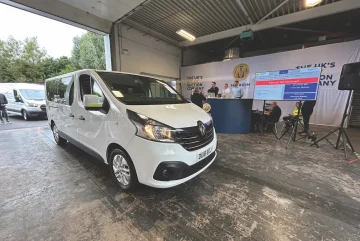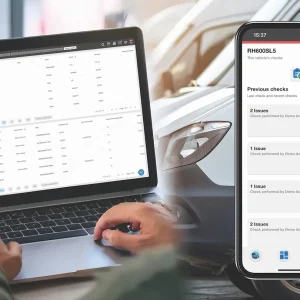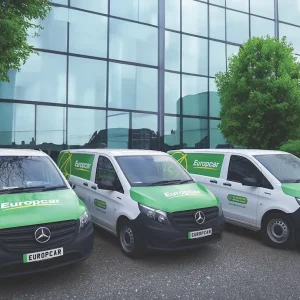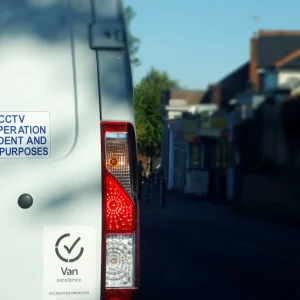
Historically, the summer has seen the used van market take a pause, with holidays meaning retail buyers have prioritised family breaks rather than replacing their vans, and the trade responding by keeping less stock. But has 2025 broken the mould? Matthew Davock, commercial vehicles director at Manheim UK, thinks so.
“This summer has been one of the most dynamic and rewarding periods we’ve seen… The strength of our conversion rates, the resilience of used van pricing and the evolving buyer landscape all point to a market that is not only recovering but transforming.
“Conversion rates soared to 84.3% over the summer, a figure that not only defies the typical summer slowdown but also represents a 16% increase year-on-year. This strong performance was underpinned by robust buyer appetite and controlled supply, with 46% of vans sold exceeding guide values.”
This positivity is echoed by Sam Magee, LCV auctioneer at G3 Vehicle Auctions, who says: “We have seen an upward trend in auction results from June to now, the opposite to the normal trendline we see in the summer trading period. For us it has been a welcome offset to the market predictions.”
Magee has noted strengths in particular age and mileage demographics. “Seventy plate up to 73 plate under 80,000 miles are marching on and making over top book, and we have seen a huge uplift in demand from buyers for tippers and clean Lutons, with no signs of them dropping off yet.”
BCA has also witnessed demand exceeding the norm, as Stuart Pearson, COO UK, comments: “In spite of the well-documented challenges with new LCV registrations, BCA saw a further uplift in LCVs being offered through our online sales programme in July and whilst rising volumes and the onset of the summer holiday season could have seriously impacted average values, the current marketplace remains very hungry for stock.”
There is some volatility in value, according to Shoreham Vehicle Auctions, as commercial vehicle manager Tim Spencer explains: “It is an interesting market where some vehicles are making £3,000–£4,000 more than book as demand exceeds supply. The vagaries of the market are evident with Euro 6 Ford Transits on 70 plates making just £1,000 more than 63, 64 and 65 plate Ford Transits. If an operator isn’t using their vehicle in London, they are happy to buy older vehicles and so the prices of 10, 11 and 12-year-old Transits have gone through the roof.”
Spencer hasn’t seen an exceptional mid-year period, he however anticipates some light at the end of the tunnel. “Following the used market’s return to its seasonal nature the sector has experienced a quiet summer and there is a lot hinging on a busy September when the volume of used vehicles coming back is expected to increase quite dramatically,” he says.
Spikes in prices achieved in the auction hall have been noted by Geoff Flood, head of LCV at Motor Auction Group: “There has been a major shortage of used LCV stock in the market over the past few months. You can throw away the used value guides currently with some vehicles making thousands more at auction as demand exceeds supply.”
Flood also sees supply returning during the autumn months but a potential delay in demand matching availability. “September is when the industry expects more stock [to come] into the market, which will be good news for everyone, but whatever happens, it will take a few months to balance supply and demand, so we expect prices to be strong well into 2026,” he says.
The valuation guides occupy a unique, impartial position, monitoring activity from vendors, remarketers and gaining sentiment from trade sources. Andy Picton, specialist residual value analyst and team leader at Glass’s concurs with the majority: “The used LCV market has become stronger as the summer has progressed, with buyer confidence at a high. Although overall volumes at auction are up on last year, there is a real appetite for quality stock at present. Anything with low miles, straight, high spec and in colour is in demand.”
Citing how age and mileage sectors are performing differently, he adds: “I have seen an increase in demand for six to 14-year-old stock. These older vehicles have less technology and are often powered by older but more reliable powertrains. Late-plate stock is struggling to sell, with reserves deemed too high. In particular, late-year 4×4 pickups are under-performing.”
Cap HPI has seen the effect of a reduced supply of vehicles appearing for resale. “There were 73,000 fewer [new] registrations in 2022, and with new registrations down in 2025, it is clear operators are keeping vehicles for longer,” observes Dionne Hanlon, senior editor commercial vehicles and motorcycles.
“The market is at its most stable for years, with values falling an average of 1% per month overall,” she adds.
Electric vans – is the tide turning?
Cap HPI: “The market for used BEV LCVs, in our opinion, is still a long way off reaching maturity. Trying to set accurate used LCV guide prices each month when there is so little used LCV sales transaction data available is difficult to say the least. Businesses exist to make money. Why would a business owner consider buying a more expensive BEV LCV when there are plenty of used diesel and petrol
models available?”
Glass’s: “There are more battery electric vehicles available in the used market and more are being sold. Awareness is improving but sales tend to be at a price point with older models seen as good value for money. Later-plate BEV models struggle with reserves held too high against list price.”
G3: “EVs have been in short supply, still dropping in the book, but more buyers are turning to them as they see their profit margins improve, plus with consumer understanding improving too, they are becoming better sellers in the retail arena. I speculate the trade buyers switching to EV now while the values are where they are and who build stock up on the retail pitches will reap the rewards for years to come.”
Manheim: “Used BEV vans have shown significant improvement in Q3, with 72% selling first time and conversion rates up 14% quarter-on-quarter. This shift is largely attributed to more competitive pricing, which has made electric vans a compelling alternative to diesel models. Buyer confidence in the product is growing, marking a turning point in the adoption of electric commercial vehicles.”
Shoreham: “Prices have come down in the EV sector to a level where both dealers and SMEs are prepared to give them a go. A five to six-year-old EV is now being sold for £3,000 and a two to four-year-old van is wholesaling for around £11,000, while newer models are in demand at around the £13,000 mark. Sentiment for used EVs has changed dramatically in 2025 as prices have fallen, and the majority of used vehicles are now finding buyers.”
Supported by:






